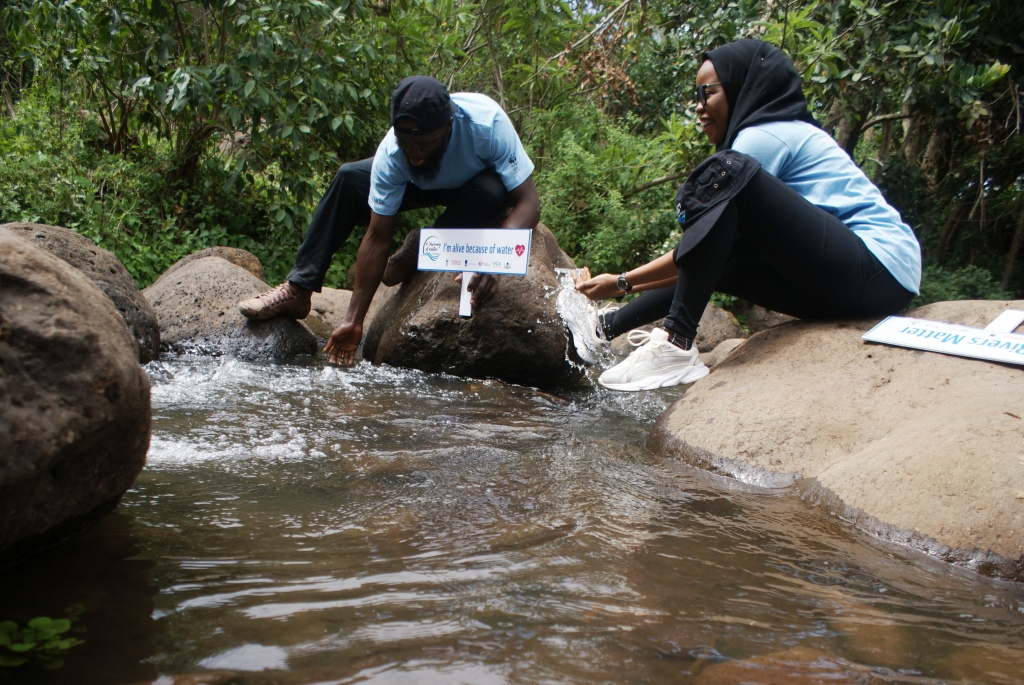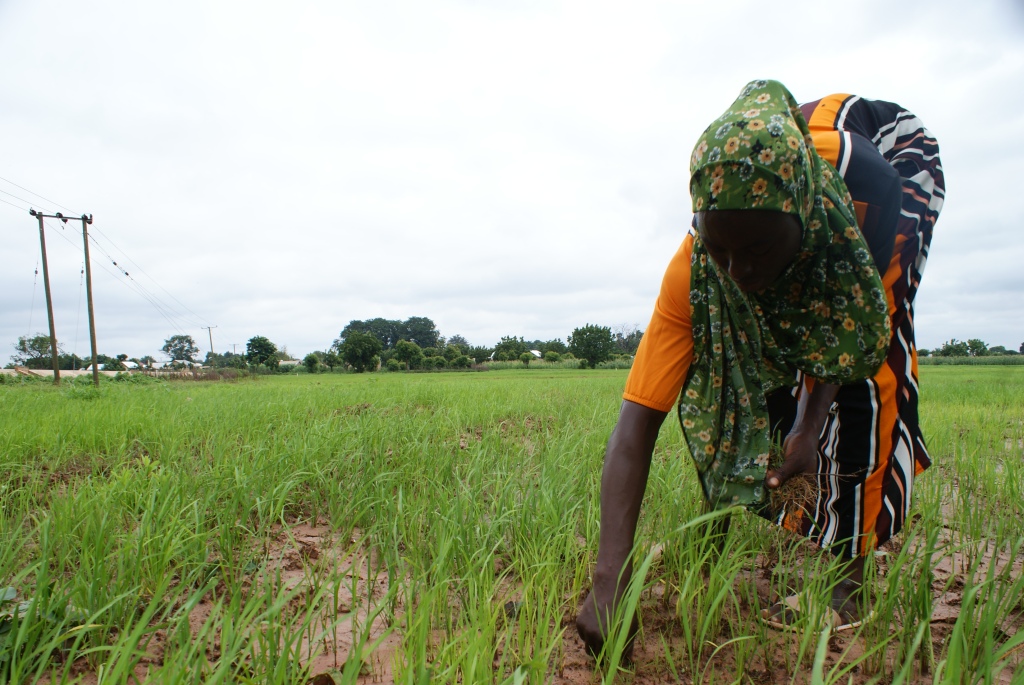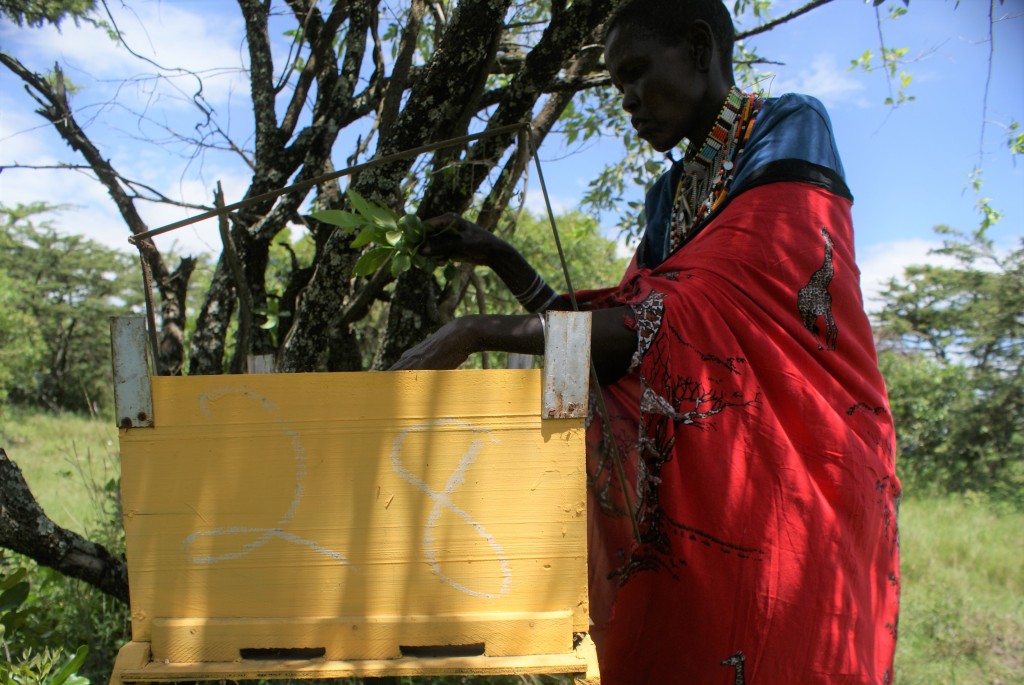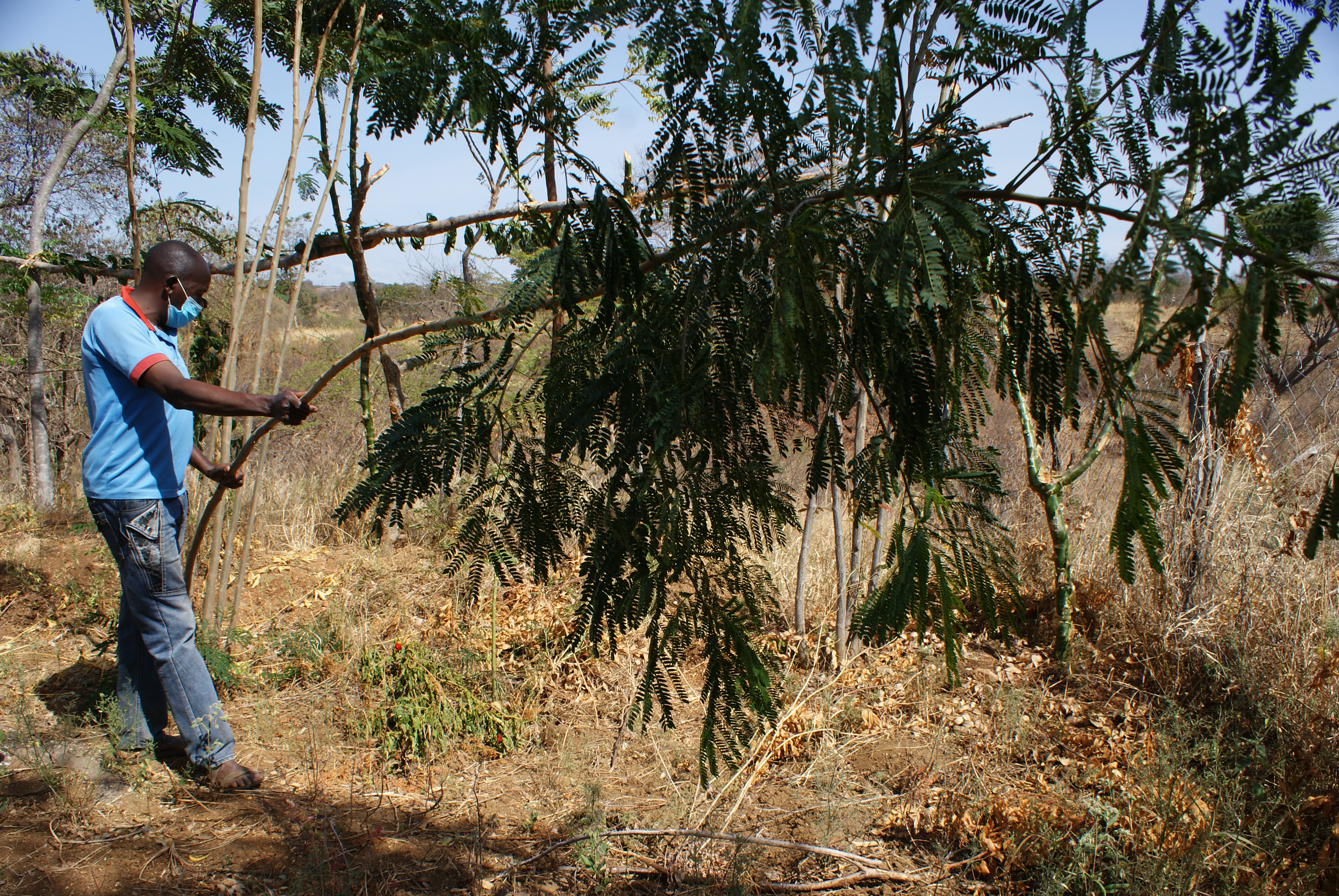
By David Njagi
Sitting under an acacia tree to cool off northern Kenya’s biting heat, Bonface Ewaar conversed in low tones with his two colleagues as they worked on contents of an open document.
Ewaar, a youth leader in Katilu village, was not sharing social trends with his colleagues, but the team was deep in the business of translating a disaster alert bulletin into the local vernacular language.
“Translating is a difficult task. But serving my community this way means a lot to me because they are able to understand and take action against disasters,” said Ewaar in a one-on-one interview, adding that they do the translations in groups of three.
Worsening disasters in Kenya have left communities thirsting for information on how to prepare for these shocks, according to Hussein Noor Adille, the chief of party at NAWIRI, a five-year humanitarian project funded by USAID.
NAWIRI, a consortium project led by the international charity, Mercy Corps, is a 100-million-dollar program running in arid Kenya.
To soften the disaster blow, the National Drought Management Authority (NDMA), a government agency, has been preparing and releasing monthly, and sometimes weekly early warning bulletins to climate troubled communities.
But the English versions have not been helping much because most Kenyans living within these communities cannot read and write. That was until youth like Ewaar, working with NAWIRI, came up with the idea of translating them into local vernacular languages.
“People who cannot read will not understand the risks they will be facing, how the disaster is progressing and market changes in terms of food prices. The translated versions serve this marginalized public,” said Adille in an interview.
Adille said NDMA releases the bulletins in English to county governments. The document is then passed to ward development committees, which are lower administrative units within counties, for access to communities.
It is from this administrative unit that Ewaar and his team pick the bulletins, translate them into Turkana language and pass the knowledge to the community through word of mouth or local radio station broadcasts.
At his village alone, his team of about eight youth who have basic education, manage to reach over 100 locals. They however volunteer to do this task.
“We are not paid to do the translations. We would do more if the government recognized this is a valuable service and compensate us. It is really changing people’s lives in terms of disaster preparedness,” said Ewaar.
Local authorities cannot estimate how many youth in Kenya are involved in the translations because the service is voluntary. But Adille of NAWIRI said the youth groups can consist of up to a dozen volunteers in a ward administrative unit.
And as lean as three, according to Abdulkarim Salesa, a youth from Isiolo county. Salesa said few youth are willing to volunteer because they are busy helping their families raise resources to navigate the raging drought.
The only way Salesa and his team are able to engage the youth is by pleading with them during community meetings to help with the translations.
“Sometimes the language used in the bulletins is difficult to understand. This is another reason we struggle to have volunteers,” said Salesa.
One way the translated disaster feeds are helping communities is through early treatment for drought related illnesses like malnutrition and respiratory illnesses, according to Moitan Akitela, a mother from Nawapeto village in northern Kenya.
During the early season ending in April, Akitela heard from the local radio that her village would experience prolonged drought due to failed rains in most parts of Kenya. The dry stretch, she learned, could also put her child in danger of malnutrition.
To her, this meant walking for over 10 kilometers from her home to the nearest health facility for medical checks, a distance she struggles to cover because lack of enough food has weakened her health.
She also risked being exposed to skin burns due to excess heat and respiratory infections due to dust storms. When there are floods, local movement is completely cut off, she said.
But reporting her situation to the village administrator before the drought worsened managed to get her connected to the NAWIRI programme, which organizes weekly health checks and treatment within villages.
She has been part of a group of women who usually gather for these weekly medical clinics at a community meeting place near her village.
“I feel I am part of Kenya,” she said in a one-on-one interview, meaning that she no longer feels marginalized from the rest of the country due to disasters.
Children are treated for malnutrition and get immunized while locals are treated for diseases like malaria, diarrhea and upper respiratory tract infections during the health clinics, according to Mark Lominito, the health systems strengthening advisor at NAWIRI, in Turkana, northern Kenya.
Families also receive a cash stimulus of KES 5,000 (about $43) every month to soften the shock families face due to the effects of drought, he said.
“The money helps my family get through very harsh times. I buy food and stock it at home. This way my children cannot miss a meal and school,” said Asuron Amodoi in a one-on-one interview, adding that the disaster alerts guide her to ration food so that supplies can last long.
Peter Lokol, a herder who also doubles up as a community health volunteer said he reduced the number of livestock in his herd when he learned that there would be a prolonged drought in northern Kenya. This way, he has cut the risk of losing all his livestock to hunger.
For Alice Eporon however, being well informed about the disaster situation in northern Kenya helps her plan her irrigated garden along the Perkerra river, which passes through her Katilu village.
In situations where harsh weather reduces the amount of water flowing through the river, she cuts on the amount of produce planted in her garden.
“The alerts help me protect the river from stress by reducing water abstraction during the dry stretch,” said Eporon in a one-on-one interview.
Craig Redmond, Mercy Corps senior vice president for programs, said the disaster alerts help local authorities intervene better, especially at this time when charities are facing supply cuts due to funds being diverted to battle the refugee crisis in Ukraine.
Meanwhile, Salesa said sometimes the government delays the release of bulletins, while he has witnessed an alert that was inaccurate.
He said one solution that can help is by developing a disaster alert app and tapping the power of technology.
Ewaar and his team of youth have taken this lead with whatsapp.
During field scouting beats to find out problems troubling their community, they take photos of the dead livestock using their smart phones.
They then post the photos through whatsapp to the county and national governments, as well as charities working at his village.
The government in collaboration with the charities are then able to respond with aid, distributing it to affected families, said Ewaar.
“It is a challenging job. But it is a game changer in terms of how local solutions can help manage worsening disasters among communities,” he said.









